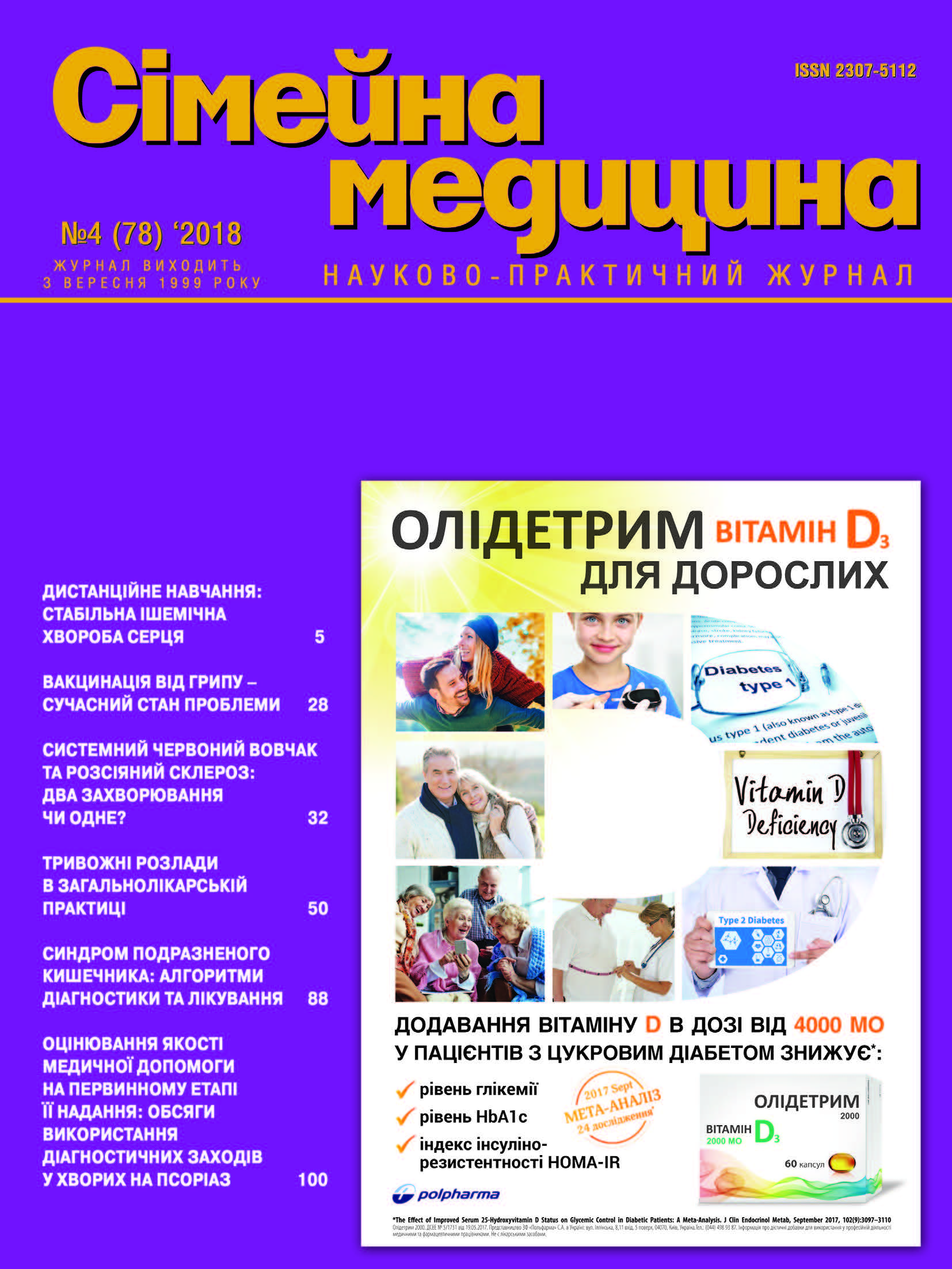Method of Prediction the Development of Arterial Hypertension in Type 1 and 2 Diabetes
##plugins.themes.bootstrap3.article.main##
Abstract
The objective: to create a mathematical model of prediction the development arterial hypertension in type 1 and type 2 diabetes based on traditional risk factors for cardiovascular diseases and the serum level of vascular endothelial factors.
Materials and methods. The study was attended by 97 people. We examined 33 type 1 diabetes patients: 23 hypertensive and 10 nonhypertensive. Also 64 type 2 diabetes patients: 41 hypertensive and 23 non-hypertensive. Were studied BMI, blood glucose, HbA1c, total cholesterol, HDL, LDL, triglycerides, insulin, HOMA, Caro, serum level of EMAP-II, fibronectin, VEGF, ICAM-1, VCAM-1, E-selectin by immunoenzyme assay in all patients. Endothelial-dependent dilatation was investigated by Celermajer metod. Static analysis was performed by metod of logistic regression.
Results. In type 1 diabetes patient, among 15 factors, 3 were selected that had a provocative effect on the development of arterial hypertension: blood glucose, EMAP-II, fibronectin. In type 2 diabetes patients, among 18 factors, 5 were identified, the combination of which had a provocative effect on the development of arterial hypertension: BMI, HbA1c, triglycerides, ICAM-1, endothelial-dependent dilatation. A computer program «Estimation of prediction the development arterial hypertension in diabetes mellitus» has been launched based on the obtained mathematical formulas.
Conclusion. A computer program «Estimation of prediction the development arterial hypertension in diabetes mellitus» and mathematical models, which formed the basis for it, allow identifying risk factors for arterial hypertension in type 1 and type 2 diabetes patients. Early started preventive work, continuous monitoring of risk factors helps prevent the development of arterial hypertension in these patients.##plugins.themes.bootstrap3.article.details##

This work is licensed under a Creative Commons Attribution 4.0 International License.
Authors retain the copyright and grant the journal the first publication of original scientific articles under the Creative Commons Attribution 4.0 International License, which allows others to distribute work with acknowledgment of authorship and first publication in this journal.
References
Герасимов А.Н. Медицинская статистика. – М.: Мед. информ. агентство, 2007, 480 с.
Celermajer DS, Sorensen KE, Gooch VM, Spiegelhalter DJ, Miller OI, Sullivan ID, et al. Non-invasive detection of endothelial dysfunction in children and adults at risk for atherosclerosis. Lancet. 1992; 340(8828): 1111–5. https://doi.org/10.1016/0140-6736(92)93147-F
Ferreira I, Hovind P, Schalkwijk CG, Parving HH, Stehouwer CDA, Rossing P. Biomarkers of inflammation and endothelial dysfunction as predictors of pulse pressure and incident hypertension in type 1 diabetes: a 20 year life-course study in an inception cohort. Diabetologia. 2018;61(1): 231–241. https://doi.org/10.1007/s00125-017-4470-5
Friedewald WT, Levy R, Fredrickson DS. Estimation of the concentration of low-density lipoprotein cholesterol in plasma, without use of the preparative ultracentrifuge. Clin Chem. 1972; 18(6): 499–502. PDF
Legro RS, Finegood D, Dunaif A. A fasting glucose to insulin ratio is a useful measure of insulin sensitivity in women with polycystic ovary syndrome. J Clin Endocrinol Metab. 1998; 83(8): 2694–8. https://doi.org/10.1210/jcem.83.8.5054
Matthews DR, Hosker JP, Rudenski AS, Naylor BA, Treacher DF, Turner RC, et al. Homeostasis model assessment: insulin resistance and beta-cell function from fasting plasma glucose and insulin concentrations in man. Diabetologia. 1985; 28(7): 412–9. PDF
Thorand B, Baumert J, Chambless L, et al. Elevated markers of endothelial dysfunction predict type 2 diabetes mellitus in middle-aged men and women from the general population. Arterioscler. Thromb. Vasc. Biol. 2006;26(2):398–405. https://doi.org/10.1161/01.ATV.0000198392.05307.aa





